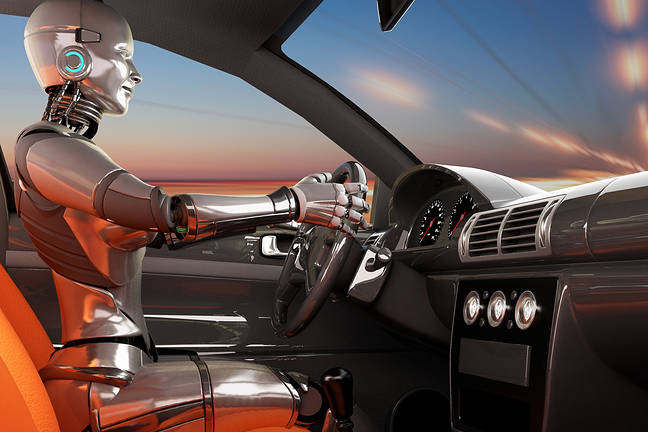If You're Intel, Self-driving Cars Look An Awful Lot Like PCs

Intel's vision of the computing architecture of autonomous vehicles is similar to that of PCs, with pricey models getting better hardware and the latest software, and cheaper self-driving cars getting the bare minimum.
The segments of premium and mid-range cars will need extra compute and over-the-air update capabilities to enable increasing levels of autonomous driving, said Erez Dagan, executive vice president at Mobileye, Intel's self-driving car system division, speaking at the Evercore ISI Autotech & AI Forum this week.
On the other hand, low-end vehicles will have basic equipment, sensors, and features as mandated or incentivized by regulations like the EU's General Safety Regulation, which focuses on improving driver safety.
"You don't need to have a strong computer or upgradable computer on a vehicle where you know the likelihood of over-the-air updates is very low," Dagan said, responding to a question about how he conceived future architectures for cars.
It's no surprise that more expensive products will get more features than less expensive alternatives; what is interesting to consider, which many not have, is a future in which autonomous vehicles on the road will have varying levels of abilities. Like PCs and smartphones, self-driving cars won't all be created equal.
Dagan was addressing how the autonomous vehicle market was developing, and not specific products the microprocessor giant will deliver. Intel, NXP, and others are actively talking about next-generation car architectures for autonomous driving, which are set to feature high-speed connectivity, advanced cameras and sensors, a reliance on cloud services, and so on.
Components will be more integrated in the premium cars, though Dagan couldn't directly comment on whether Mobileye or automakers using the company's tech will deliver the over-the-air updates.
- Intel's Mobileye unveils first 'production-grade fully electric self-driving vehicle,' partners with Sixt for Munich launch
- We're gonna bounce back, says Intel's Gelsinger: Don't worry, most of our chips will be made by us... in 2023
- One would assume that they like to 'Moovit, Moovit'. Intel-owned transport app hitches ride on Huawei AppGallery
- Intel: 'Another one to two years before the industry is able to completely catch up with demand'
Mobileye has a dual system – one based on cameras, and the other based on depth sensors like radars and lidar – to enable autonomous driving. It is also using Intel's silicon photonics and radio frequency intellectual property to develop sensors and camera systems. The company is also building a cloud-based mapping system based on information provided by cars equipped with its cameras.
Intel last month announced a partnership with Sixt to launch an autonomous taxi in Munich next year.
And speaking of cloud-connected cars, Arm this month unveiled SOAFEE – that's Scalable Open Architecture for the Embedded Edge – which developers can use, for instance, to build backend services and software update mechanisms, and integrate them with applications and firmware running on vehicles. ®
From Chip War To Cloud War: The Next Frontier In Global Tech Competition
The global chip war, characterized by intense competition among nations and corporations for supremacy in semiconductor ... Read more
The High Stakes Of Tech Regulation: Security Risks And Market Dynamics
The influence of tech giants in the global economy continues to grow, raising crucial questions about how to balance sec... Read more
The Tyranny Of Instagram Interiors: Why It's Time To Break Free From Algorithm-Driven Aesthetics
Instagram has become a dominant force in shaping interior design trends, offering a seemingly endless stream of inspirat... Read more
The Data Crunch In AI: Strategies For Sustainability
Exploring solutions to the imminent exhaustion of internet data for AI training.As the artificial intelligence (AI) indu... Read more
Google Abandons Four-Year Effort To Remove Cookies From Chrome Browser
After four years of dedicated effort, Google has decided to abandon its plan to remove third-party cookies from its Chro... Read more
LinkedIn Embraces AI And Gamification To Drive User Engagement And Revenue
In an effort to tackle slowing revenue growth and enhance user engagement, LinkedIn is turning to artificial intelligenc... Read more

